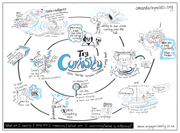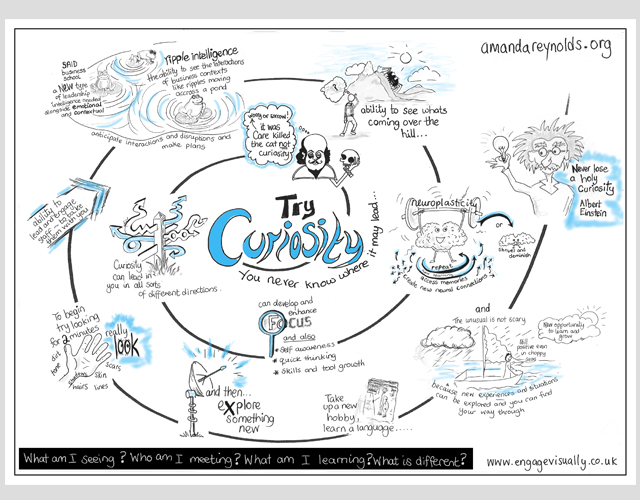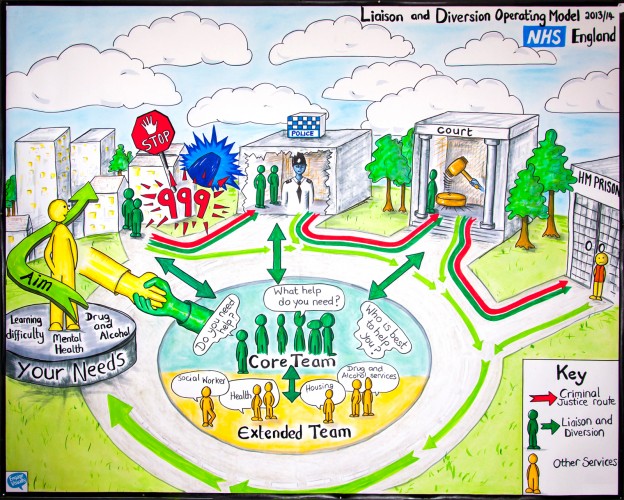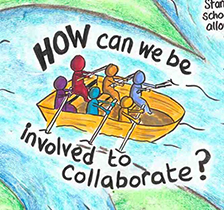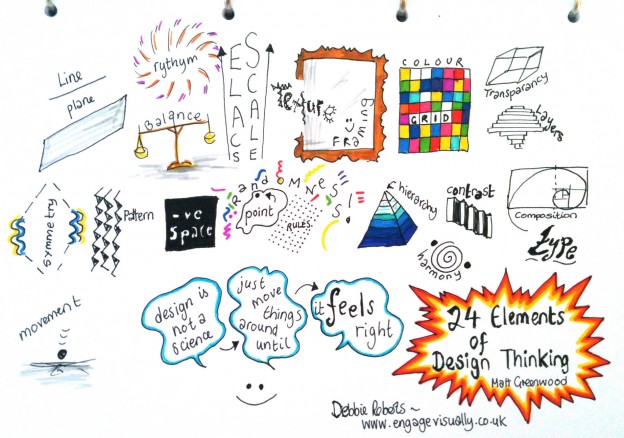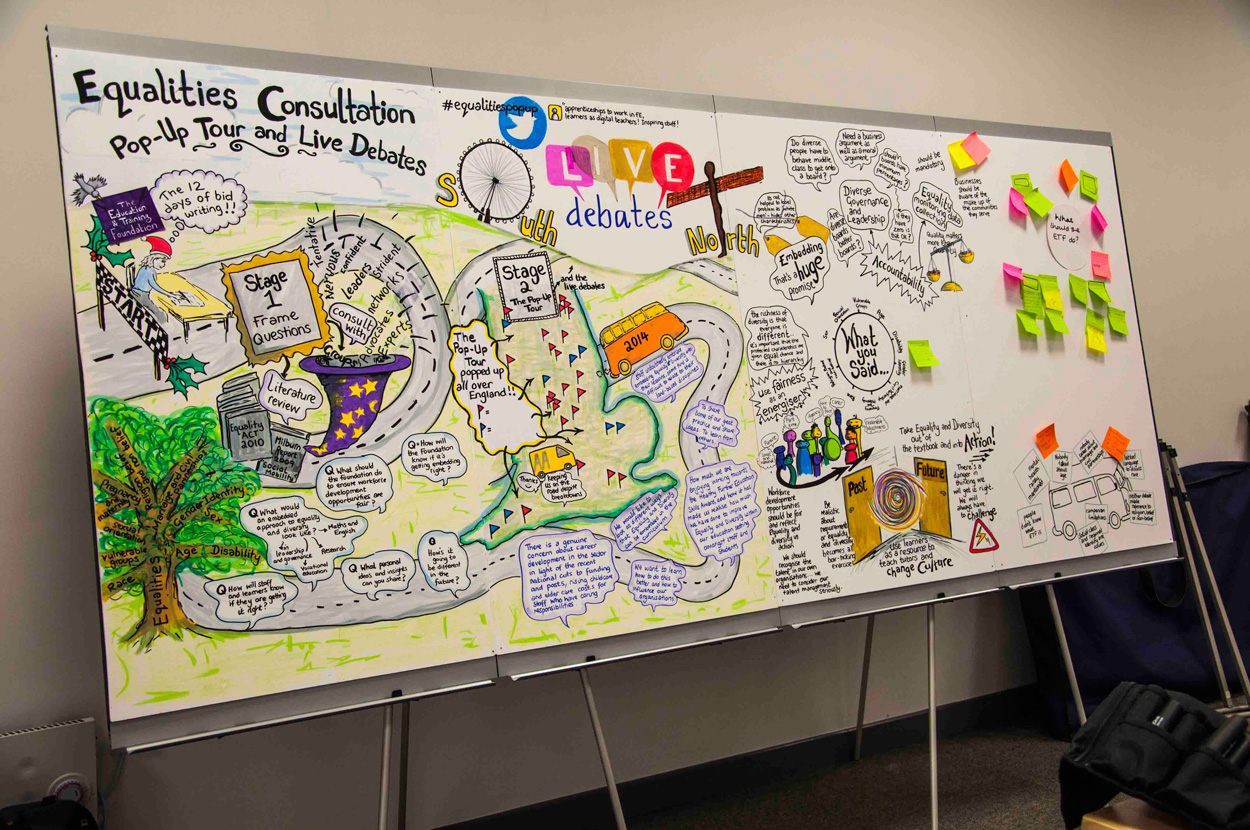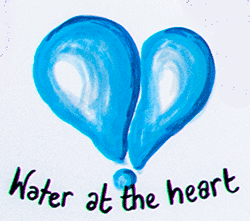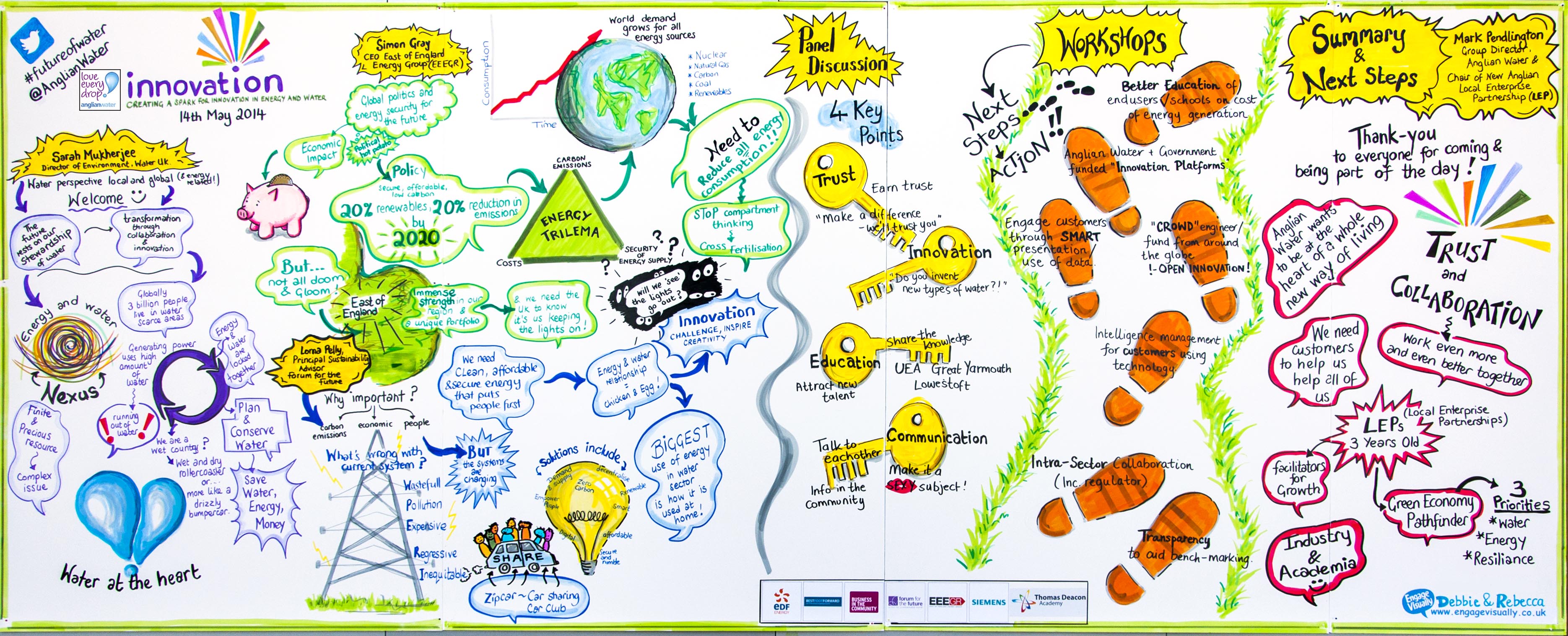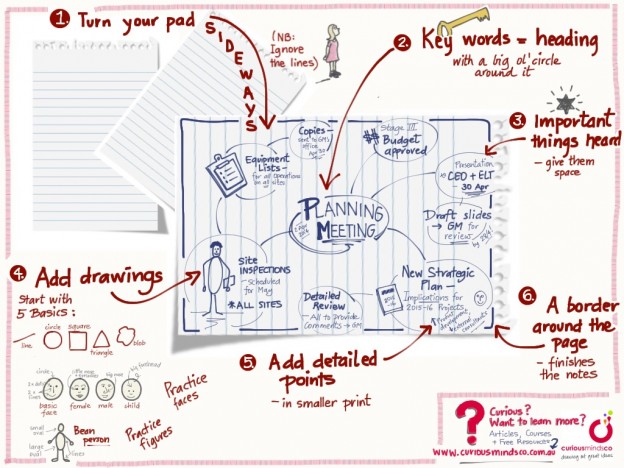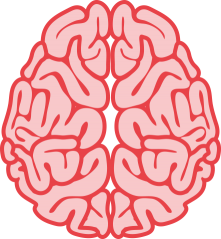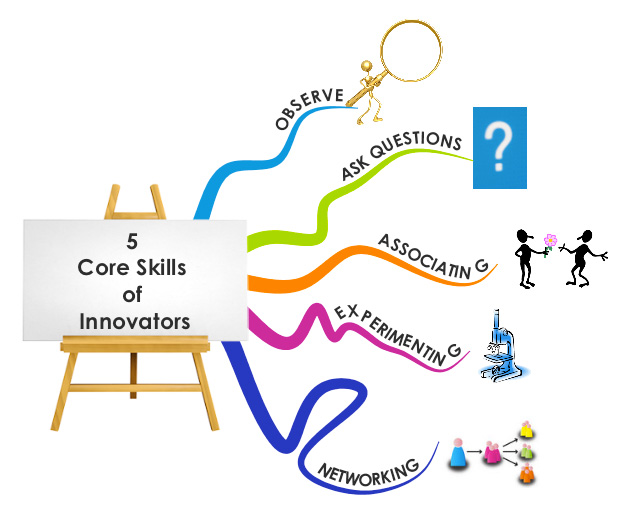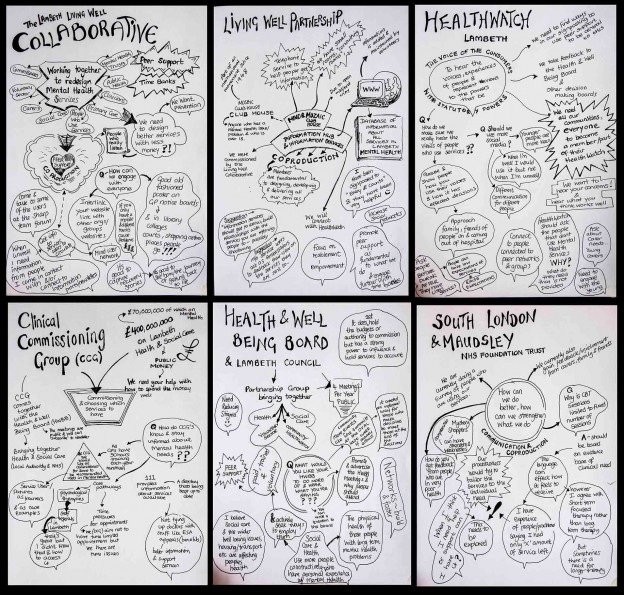Here’s my latest conundrum, a conundrum that emerged as I creating this recent graphic recording…. I was left pondering as I came to the end of the piece what do I refer to it as? In reality, this is the same pondering thought that surrounds how people refer to graphic recording and graphic facilitation more generally.
This word and semantic conundrum came into focus when presented with a series of leadership blogs by Amanda Reynolds of Blend Associates (http://amandareynolds.org). Amanda wanted an image, a graphic, a graphic narrative that graphically records her leadership blog. Amanda wanted her readers to be able to a large extent to access the essence of the blog through a stand alone graphic or to read the graphic in a complementary way alongside the blog. Fortuitously Amanda’s latest blog on leadership was all about curiosity (https://blendassociates.wordpress.com/2015/02/28/can-you-be-a-great-leader-try-curiosity/). And with good curiosity I began to explore the language people are using for graphic facilitation and graphic recording, within a relatively short while I had come across this not insubstantial list;
- Archi-toons
- Architecturally oriented visual explanation
- Artifacts
- Artwork
- Big Map
- Captures
- Charts
- Drawings
- Graphic Facilitation
- Graphic recording
- Graphic harvest
- Illustration
- Infoharvest
- Flow
- Mindmap
- Mapping
- Maps
- Model
- Murals
- Notes
- Pictures
- Rich Pictures
- Sketch notes (not usually large scale but created live)
- Storyboards of their day
- The big paper
- The recording
- Visuals,
- visual documentations
- Visual harvest
- Visual maps
- Visual minutes
- Visual notes
- Visual reporting
- Visual storytelling
- Visual summaries
- Visual templates
- Visuals
So having gathered this ever growing list my curiosity leads me to recognise I need to continue to listen and explore the language and words people use and the contexts they are using them in and see where this leads me. And whilst I recognise how words and semantics can be all powerful what ultimately is being done in the work is to use visual communication tools to support people in their various endeavours. Therefore if these visual communication tools are supporting peoples processes and capturing and conveying meaning then they achieve their purpose whatever you call it.
If you’d like to tell me what you would call this piece on curiosity I’d love to hear your views.
_______________________
You can find the Leadership blogs by Amanda Reynolds of Blend Associates at; http://amandareynolds.org and Amanda’s Leadership blog on Curiosity can be found at; https://blendassociates.wordpress.com/2015/02/28/can-you-be-a-great-leader-try-curiosity/
